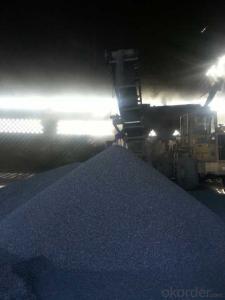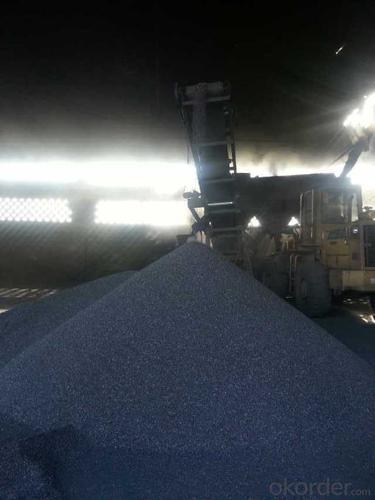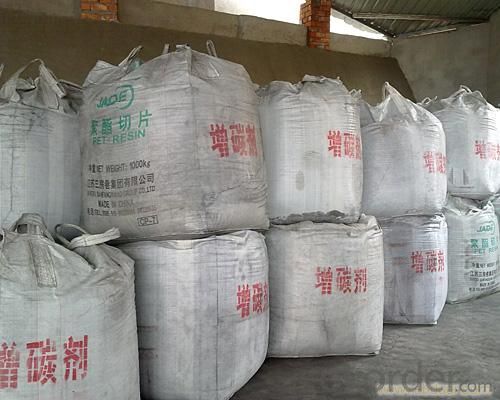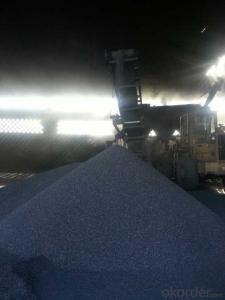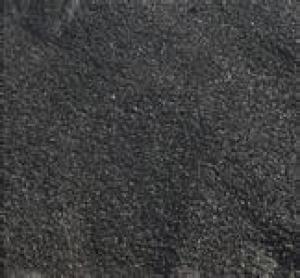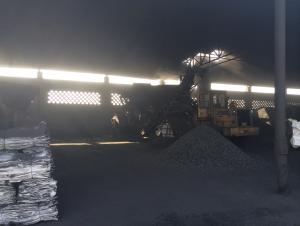FC94 Carbon Additive/CNBM China Carbon Additive Product
- Loading Port:
- Tianjin
- Payment Terms:
- TT OR LC
- Min Order Qty:
- 0 m.t.
- Supply Capability:
- 100000 m.t./month
OKorder Service Pledge
OKorder Financial Service
You Might Also Like
Packaging & Delivery
| Packaging Detail: | 25kgs/50kgs/1ton per bag or as buyer's request |
| Delivery Detail: | Within 20 days after receiving corect L/C |
Specifications
Calcined Anthracite
Fixed carbon: 90%-95%
S: 0.5% max
Size: 0-3. 3-5.3-15 or as request
Feature
All of our goods are made in the best quality of world famous Tianjin. All of our products are with High carbon, Low ash, low sulphur, Low Moisture.
Application
The Calcined Anthracite Coal/Gas Calcined Anthracite Coal/Carbon Raiser is mainly used in steelmaking in electrical stove, screening water, shipbuilding sandblast to remove rust. It can reduce the cost of steelmaking effectively by replacing the traditional petroleum coke of carburant.Also can improve the Carbon content in steel-melting and Ductile iron foundry.
Specifications
Calcined Anthracite
Fixed carbon: 90%-95%
S: 0.5% max
Size: 0-3. 3-5.3-15 or as request
PARAMETER UNIT GUARANTEE VALUE | |||||
F.C.% | 95MIN | 94MIN | 93MIN | 92MIN | 90MIN |
ASH % | 4MAX | 5MAX | 6MAX | 7MAX | 8MAX |
V.M.% | 1 MAX | 1MAX | 1.5MAX | 1.5MAX | 1.5MAX |
SULFUR % | 0.5MAX | 0.5MAX | 0.5MAX | 0.5MAX | 0.5MAX |
MOISTURE % | 0.5MAX | 0.5MAX | 0.5MAX | 0.5MAX | 0.5MAX |
Size can be adjusted based on buyer's request.
Picture
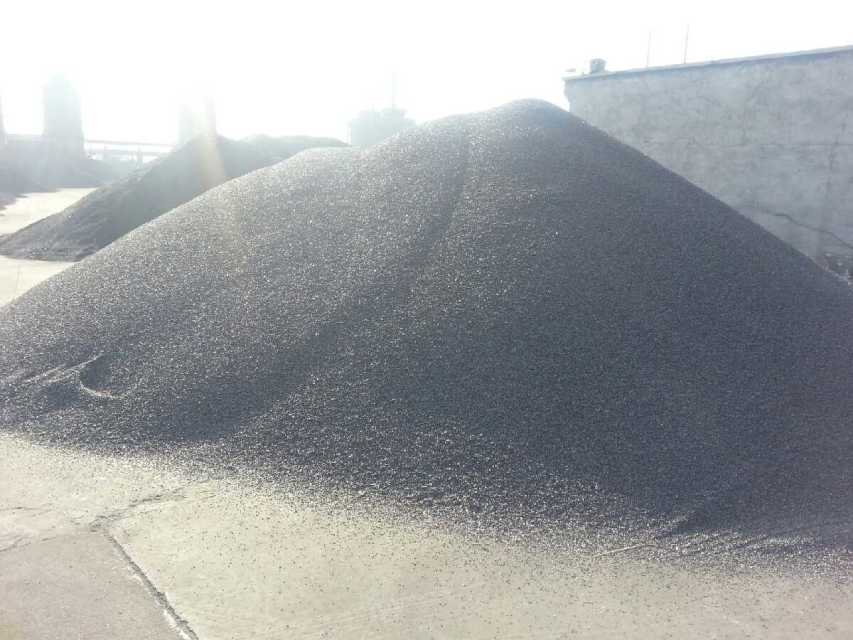
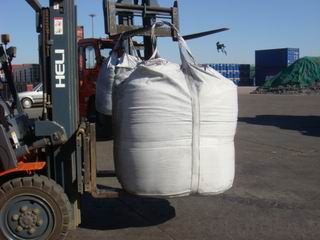
- Q: Why is carbon content of stainless steel low?
- The corrosion resistance of stainless steel decreases with the increase of carbon content. Therefore, the carbon content of most stainless steel is lower, the maximum is not more than 1.2%, and some steel's Omega C (carbon content) is even less than 0.03% (such as 00Cr12). The main alloying element in stainless steel is Cr (chromium), and the steel has corrosion resistance only when the Cr content reaches a certain value. Therefore, stainless steel in general Cr (chromium) content of at least 10.5%. Stainless steel also contains Ni, Ti, Mn, N, Nb, Mo, Si, Cu and other elements.
- Q: What are the impacts of carbon emissions on human health in developing countries?
- The impacts of carbon emissions on human health in developing countries can be significant. Exposure to high levels of carbon emissions, particularly from sources such as vehicle exhaust, industrial pollution, and inefficient cooking fuels, can lead to various health problems. These include respiratory issues like asthma, bronchitis, and lung cancer, as well as cardiovascular diseases, allergies, and compromised immune systems. Additionally, carbon emissions contribute to the formation of smog and air pollution, which further worsen these health conditions. Developing countries often lack the resources and infrastructure to effectively mitigate these emissions, making their populations more vulnerable to the adverse health effects of carbon emissions.
- Q: How to identify a laptop shell is carbon fiber
- Carbon fiber, as its name suggests, is made from carbon fiber, so there are several characteristics. First, if it is not colored, you can see the obvious fiber. Second is black carbon color. And it's a lot more than ABS.
- Q: What are the effects of carbon emissions on the Arctic ecosystem?
- Carbon emissions have significant effects on the Arctic ecosystem, primarily due to the phenomenon of global warming. As carbon dioxide and other greenhouse gases are released into the atmosphere, they trap heat, leading to increased temperatures worldwide. However, the Arctic is particularly vulnerable to these effects due to its unique characteristics. One of the most significant impacts of carbon emissions on the Arctic ecosystem is the rapid melting of ice. Rising temperatures cause glaciers and ice sheets to shrink, leading to the loss of habitat for ice-dependent species such as polar bears, walruses, and seals. These animals not only rely on the ice for resting and breeding but also for hunting and finding food. With the reduction of their natural habitat, their populations are declining, impacting the delicate balance of the Arctic food chain. Additionally, the melting of ice results in rising sea levels, which can have cascading effects on coastal areas. Many Arctic communities, including indigenous peoples, are located near the coast and depend on the sea for their livelihoods. Increased erosion, flooding, and storm surges due to rising sea levels threaten their homes, infrastructure, and traditional ways of life. Furthermore, carbon emissions contribute to ocean acidification, a process in which the absorption of excess carbon dioxide by seawater leads to a decrease in its pH level. This acidification has detrimental effects on marine organisms such as shellfish, corals, and plankton, which struggle to build and maintain their calcium carbonate structures. These organisms are essential food sources for various Arctic species, including fish, seabirds, and marine mammals. The decline in their populations disrupts the intricate web of life in the Arctic and can have far-reaching consequences. Climate change caused by carbon emissions also disrupts the timing and patterns of seasonal events, such as the timing of plant growth, the migration of birds, and the availability of food resources. This mismatch can have severe consequences for species that rely on specific timing for reproduction, migration, and survival. Overall, the effects of carbon emissions on the Arctic ecosystem are profound and wide-ranging. The loss of sea ice, rising sea levels, ocean acidification, and disrupted ecological processes all contribute to the vulnerability of Arctic species and communities. Urgent action to reduce carbon emissions, mitigate climate change, and protect this fragile ecosystem is crucial for the long-term preservation of the Arctic.
- Q: What are the impacts of carbon emissions on the stability of deserts?
- Carbon emissions have a significant impact on the stability of deserts. Increased levels of carbon dioxide in the atmosphere contribute to global warming, leading to higher temperatures and altered precipitation patterns. These changes can intensify desertification processes, such as soil erosion and water scarcity, further destabilizing desert ecosystems. Additionally, carbon emissions from human activities, such as fossil fuel combustion, contribute to air pollution, which can harm desert flora and fauna, disrupting their ecological balance and overall stability.
- Q: What are the impacts of carbon emissions on the stability of river ecosystems?
- Carbon emissions have significant impacts on the stability of river ecosystems. One of the primary consequences of carbon emissions is the increase in greenhouse gases in the atmosphere, leading to global warming. Rising temperatures have direct and indirect effects on river ecosystems. Firstly, increased temperatures can alter the physical characteristics of rivers and affect the availability of oxygen in the water. Warmer water holds less dissolved oxygen, which can harm aquatic organisms such as fish and invertebrates that rely on oxygen for survival. This decrease in oxygen levels can lead to reduced biodiversity and even fish kills. Secondly, climate change, driven by carbon emissions, can disrupt the natural hydrological cycle. Changes in precipitation patterns can result in droughts or floods, causing fluctuations in river flow. These changes can affect the spawning and migration patterns of many aquatic species, disrupting their life cycles and reducing their populations. Furthermore, altered river flows can also impact the stability of riverbank and riparian habitats, leading to erosion and habitat loss. Additionally, increased carbon emissions contribute to ocean acidification. When carbon dioxide is absorbed by water, it forms carbonic acid, which lowers the pH of the water. Acidic waters can have detrimental effects on aquatic life, including shellfish, corals, and other calcifying organisms. River ecosystems are interconnected with coastal and marine ecosystems, so the impacts of ocean acidification can indirectly affect river ecosystems through the food web. Moreover, carbon emissions contribute to the deposition of air pollutants, such as nitrogen and sulfur compounds, onto land and water bodies. These pollutants can be transported by rainfall into rivers, leading to increased nutrient levels and eutrophication. Excessive nutrients can cause harmful algal blooms, deplete oxygen levels, and create dead zones, further disrupting the balance of river ecosystems. In conclusion, carbon emissions have profound impacts on the stability of river ecosystems. Rising temperatures, altered hydrological cycles, ocean acidification, and increased nutrient levels all contribute to the degradation of these ecosystems. It is crucial to reduce carbon emissions and implement sustainable practices to mitigate these impacts and preserve the health and stability of river ecosystems.
- Q: How does carbon affect the pH of water?
- The pH of water can be affected by carbon due to the process of carbonation. When water dissolves carbon dioxide (CO2), it undergoes a reaction with the water molecules to create carbonic acid (H2CO3). As a result, the concentration of hydrogen ions (H+) in the water increases, causing a decrease in pH. Consequently, water becomes more acidic when carbonated. Furthermore, carbonic acid can further break down into bicarbonate ions (HCO3-) and hydrogen ions (H+), which also contribute to the rise in acidity. It is worth noting that the impact of carbonation on pH is contingent upon the concentration of carbon dioxide present in the water.
- Q: How does carbon dioxide affect the Earth's atmosphere?
- Carbon dioxide (CO2) affects the Earth's atmosphere in several ways. First and foremost, it is a greenhouse gas, meaning it traps heat from the sun and prevents it from escaping back into space. This process, known as the greenhouse effect, plays a vital role in maintaining Earth's temperature range and making our planet habitable. However, excessive amounts of CO2 in the atmosphere can intensify the greenhouse effect, leading to global warming and climate change. Human activities, such as burning fossil fuels for energy and deforestation, have significantly increased the concentration of CO2 in the atmosphere since the industrial revolution. The increased levels of CO2 contribute to the rising global temperatures, melting polar ice caps, and changing weather patterns. These changes have severe consequences, including more frequent and intense heatwaves, droughts, floods, and storms. Additionally, CO2 absorption by the oceans leads to ocean acidification, which harms marine life and coral reefs. Furthermore, the increase in CO2 levels affects ecosystems and biodiversity. Plants use CO2 during photosynthesis, but excessive amounts can disrupt their growth and alter the balance of ecosystems. This disruption can have cascading effects on other organisms that rely on the affected plant species for food or shelter. Overall, the excess of carbon dioxide in the Earth's atmosphere is contributing to significant environmental changes and poses a threat to the stability of our planet. It is crucial to reduce CO2 emissions, promote sustainable practices, and develop alternative energy sources to mitigate the impacts of climate change and preserve the health of our atmosphere.
- Q: What are the consequences of increased carbon emissions on global trade?
- Increased carbon emissions have significant consequences on global trade. One of the most immediate impacts is the potential for stricter environmental regulations and carbon pricing mechanisms imposed by countries and international agreements. This can lead to higher costs for industries and businesses that rely heavily on carbon-intensive activities, such as manufacturing and transportation. As a result, companies may face increased production costs, which can be passed on to consumers in the form of higher prices for goods and services. This can have a negative effect on global trade, as higher costs may reduce demand and hinder international competitiveness. Additionally, industries that do not comply with environmental regulations or carbon reduction targets may face trade barriers or sanctions, further limiting their ability to participate in global trade. Another consequence of increased carbon emissions is the potential for climate change-related disruptions to supply chains. Rising temperatures, extreme weather events, and sea-level rise can damage infrastructure, disrupt transportation routes, and affect the availability and quality of resources. This can lead to delays in production and shipping, increased transportation costs, and a higher risk of supply chain interruptions. These disruptions can have far-reaching impacts on global trade, affecting the flow of goods, services, and investments across borders. Furthermore, increased carbon emissions contribute to global warming, which can have long-term consequences for agricultural productivity and food security. Changes in temperature and precipitation patterns can lead to crop failures, reduced yields, and shifts in agricultural production regions. This can disrupt global food supply chains and lead to price volatility, affecting trade flows and potentially exacerbating food shortages and inequalities. In summary, increased carbon emissions have several consequences on global trade. Stricter environmental regulations and carbon pricing can increase costs for industries, potentially reducing their competitiveness. Climate change-related disruptions to supply chains can lead to delays, increased costs, and interruptions in trade. Lastly, the impact of global warming on agricultural productivity can have significant implications for food security and trade in agricultural commodities.
- Q: How is carbon used in water filtration systems?
- Due to its impressive adsorption properties, carbon is widely used in water filtration systems. Adsorption occurs when the molecules of a substance bind to the surface of another material, which is the case with carbon in this context. In water filtration, activated carbon is particularly effective. It is carbon that has undergone special processing to create a large surface area. When water passes through the filtration system, the carbon captures and retains various impurities, including organic compounds, chlorine, volatile organic compounds (VOCs), and certain heavy metals. This adsorption process effectively eliminates unpleasant odors and tastes, making the water more enjoyable to drink. Furthermore, carbon plays a crucial role in removing potentially harmful contaminants such as pesticides, herbicides, and pharmaceutical residues. Additionally, carbon filtration systems aid in reducing the risk of waterborne illnesses by eliminating bacteria, viruses, and parasites. In summary, carbon is an indispensable element of water filtration systems as it greatly enhances the quality and safety of drinking water.
Send your message to us
FC94 Carbon Additive/CNBM China Carbon Additive Product
- Loading Port:
- Tianjin
- Payment Terms:
- TT OR LC
- Min Order Qty:
- 0 m.t.
- Supply Capability:
- 100000 m.t./month
OKorder Service Pledge
OKorder Financial Service
Similar products
Hot products
Hot Searches
